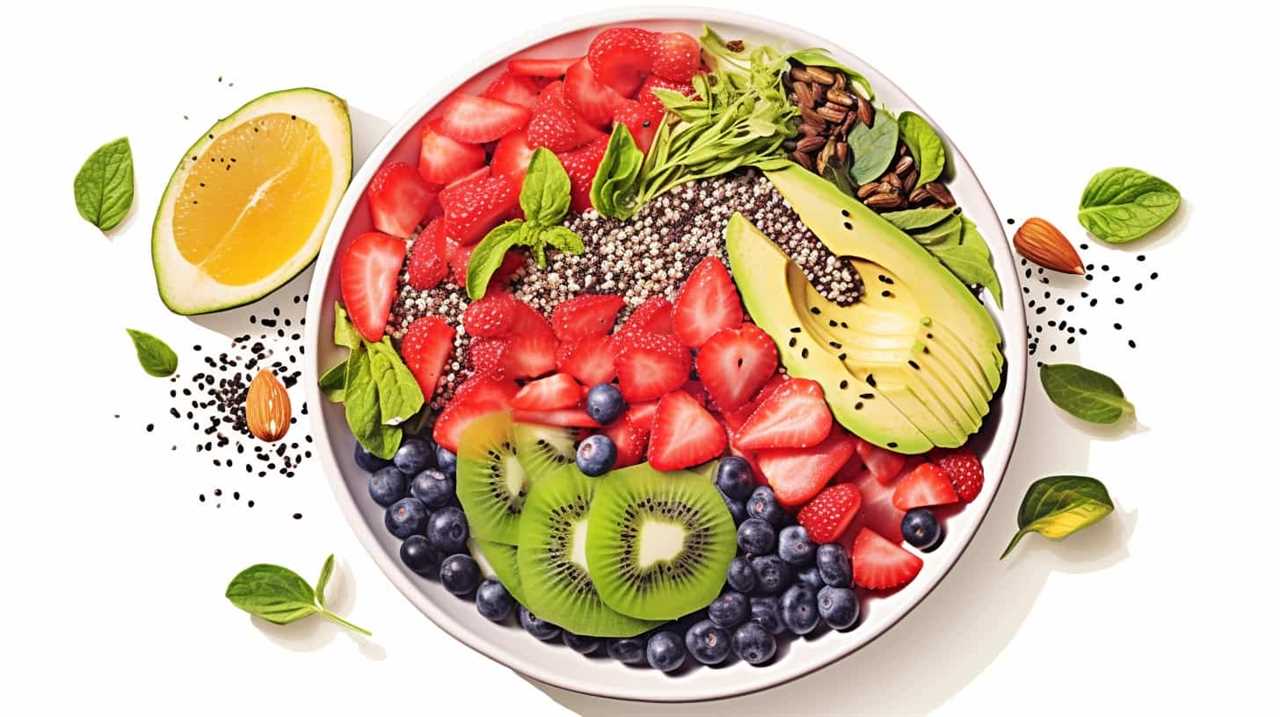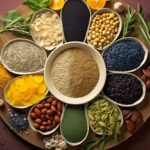
We have unearthed 13 intriguing findings about the long-standing practice of seed cultivation.
Did you know that chia seeds have a rich history dating back to Pre-Columbian cultures? These tiny powerhouses played a vital role in Mesoamerican agriculture as staple crops. However, their significance declined over time, only to be rediscovered by modern researchers.
Join us as we explore the fascinating journey of chia seeds and their impact on historic seed farming.
Key Takeaways
- Chia seeds have a long history dating back to Pre-Columbian cultures and were a staple crop in Mesoamerican agriculture.
- Chia seeds provided a significant source of protein, fiber, and omega-3 fatty acids, and were incorporated into various dishes for sustained energy and good health.
- Chia seeds played a vital role in shaping ancient agricultural practices, offering sustained endurance for labor-intensive activities and fostering social and economic connections through cultivation and trade.
- After experiencing a decline, chia seeds have been rediscovered and appreciated for their nutritional value, high in omega-3 fatty acids, fiber, antioxidants, calcium, magnesium, and phosphorus.
Ancient Origins of Chia Seeds
We delved into the ancient origins of chia seeds, uncovering their fascinating history and cultivation techniques. Chia seeds have a rich heritage that dates back thousands of years to civilizations such as the Aztecs and Mayans. These ancient cultures recognized the nutritional value of chia seeds, which were a staple in their diets.
Chia seeds were cultivated using traditional techniques, such as sowing the seeds in well-drained soil and providing them with adequate sunlight and water. Today, chia seed cultivation techniques have evolved with modern agricultural practices. Chia seeds are now widely available and have gained popularity in modern diets due to their numerous health benefits.
They’re a great source of fiber, omega-3 fatty acids, and antioxidants, making them a valuable addition to a balanced diet.
Chia Seeds in Pre-Columbian Cultures
Chia seeds played a crucial role in the agricultural practices of pre-Columbian cultures, influencing their diet and overall well-being. These cultures developed sophisticated chia seed cultivation techniques to ensure a steady supply of this nutritious superfood.
Chia seeds were highly valued for their rich nutritional profile, providing a significant source of protein, fiber, omega-3 fatty acids, and antioxidants. The cultivation of chia seeds involved careful selection of the best plants, cultivation in well-drained soil, and proper irrigation techniques. These practices allowed pre-Columbian cultures to cultivate chia seeds on a large scale, ensuring a reliable food source for their communities.

Chia seeds were incorporated into various dishes, such as beverages and porridges, providing sustained energy and promoting good health.
Transitioning into the subsequent section about the role of chia seeds in Mesoamerican agriculture, it’s important to explore how these ancient cultures utilized chia seeds in their agricultural practices.
Role of Chia Seeds in Mesoamerican Agriculture
Continuing our exploration of historic seed farming, chia seeds played a vital role in Mesoamerican agriculture, shaping the agricultural practices of ancient cultures in the region. Chia seeds held immense cultural significance and were highly valued by the Mesoamericans for their impressive nutritional benefits.
Here are five reasons why chia seeds were so important:

- Rich in omega-3 fatty acids, chia seeds provided a valuable source of essential nutrients.
- Chia seeds were a reliable source of energy, offering sustained endurance for labor-intensive activities.
- These seeds were versatile and could be consumed in various forms, such as ground or soaked in water.
- Chia seeds were an integral part of religious ceremonies and rituals, symbolizing life and fertility.
- The cultivation and trade of chia seeds fostered social and economic connections between Mesoamerican communities.
With their cultural significance and nutritional benefits, chia seeds became more than just a crop – they became a staple in Mesoamerican agriculture.
Transitioning into the next section, let’s delve into the remarkable qualities that made chia seeds a highly prized and widely cultivated food source.
Chia Seeds as a Staple Crop
Chia seeds played a crucial role as a staple crop in Mesoamerican agriculture. These tiny seeds were highly valued for their nutritional benefits and versatile uses. They provided a source of sustainable energy for the ancient civilizations, and their high protein and fiber content made them an ideal food source. Chia seeds were also used in medicinal remedies and religious ceremonies.
Today, chia seeds continue to be appreciated for their nutritional value and are widely used in modern cuisine. They can be added to smoothies, baked goods, and salads, or used as a vegan egg substitute. The rediscovery of chia seeds in recent years has sparked a renewed interest in their cultivation and consumption.

Now, let’s explore the decline and rediscovery of chia seeds.
Decline and Rediscovery of Chia Seeds
After centuries of prominence in Mesoamerican agriculture, the cultivation and consumption of chia seeds experienced a decline before their recent rediscovery. During this period, chia seeds were overshadowed by other crops and largely forgotten by mainstream society. However, in recent years, there’s been a resurgence of interest in chia seeds due to their numerous nutritional benefits.
Here are five reasons why chia seeds are making a comeback:
- High in omega-3 fatty acids, which are essential for brain health.
- Packed with fiber, promoting healthy digestion and aiding in weight management.
- Rich in antioxidants, protecting the body against free radicals and reducing inflammation.
- Contains calcium, magnesium, and phosphorus, supporting bone health.
- Versatile ingredient that can be easily incorporated into various recipes, such as smoothies, puddings, and baked goods.
As more people become aware of the nutritional benefits of chia seeds, their popularity is steadily increasing, contributing to their revival in modern agriculture and diets.

Frequently Asked Questions
How Long Does It Take for Chia Seeds to Grow Into Mature Plants?
Chia seeds typically take 90-120 days to grow into mature plants. The growth rate is influenced by optimal cultivation conditions such as adequate sunlight, well-drained soil, and regular watering.
Are There Any Specific Rituals or Traditions Associated With the Cultivation of Chia Seeds in Pre-Columbian Cultures?
In pre-Columbian cultures, the cultivation of chia seeds was steeped in cultural significance. Through intricate rituals and traditions, farmers honored the land and practiced farming techniques that ensured the success of their harvests.
What Are Some Alternative Uses of Chia Seeds Apart From Being a Staple Crop?
Alternative uses of chia seeds, apart from being a staple crop, include incorporating them into baked goods, smoothies, and puddings. These versatile seeds are rich in fiber, omega-3 fatty acids, and antioxidants, providing numerous nutrition benefits.
How Did the Decline of Chia Seeds Impact the Mesoamerican Agriculture System?
The decline of chia seeds had a significant impact on the Mesoamerican agriculture system. Chia seeds were a vital crop, and their decline led to a disruption in the ecosystem and a loss of valuable nutrients for the people.

What Methods Were Used in the Rediscovery of Chia Seeds After Their Decline?
We researched the methods used in the rediscovery of chia seeds after their decline and found fascinating insights into how the chia seed decline impacted the mesoamerican agriculture system.
Conclusion
In conclusion, the historic insights into seed farming are nothing short of mind-boggling.
From the ancient origins of chia seeds to their crucial role in Mesoamerican agriculture, these tiny seeds have proven to be a staple crop that stood the test of time.
Despite their decline, the rediscovery of chia seeds has opened up a world of possibilities for their utilization.

It’s truly fascinating how something as small as a seed can have such a profound impact on our history and future.















